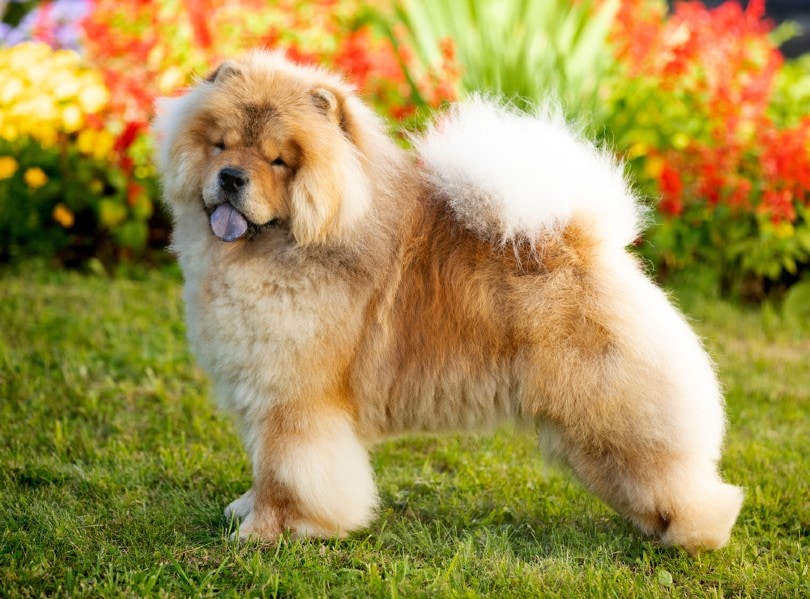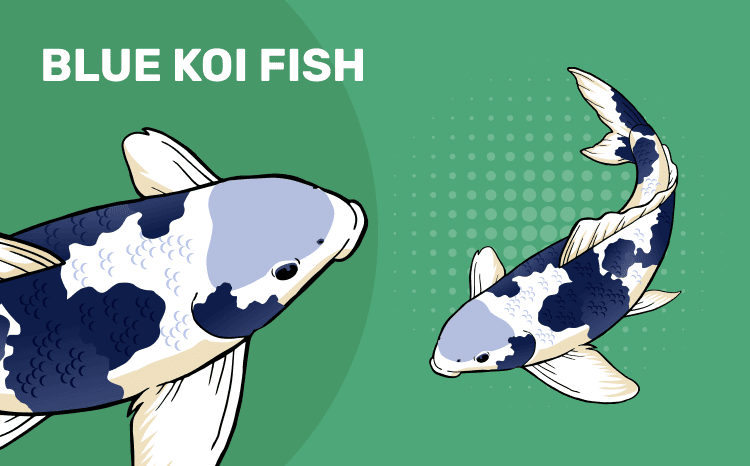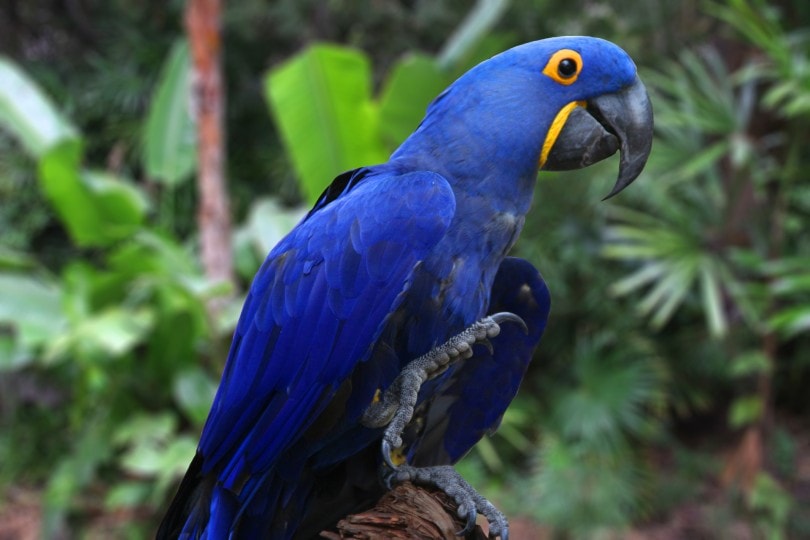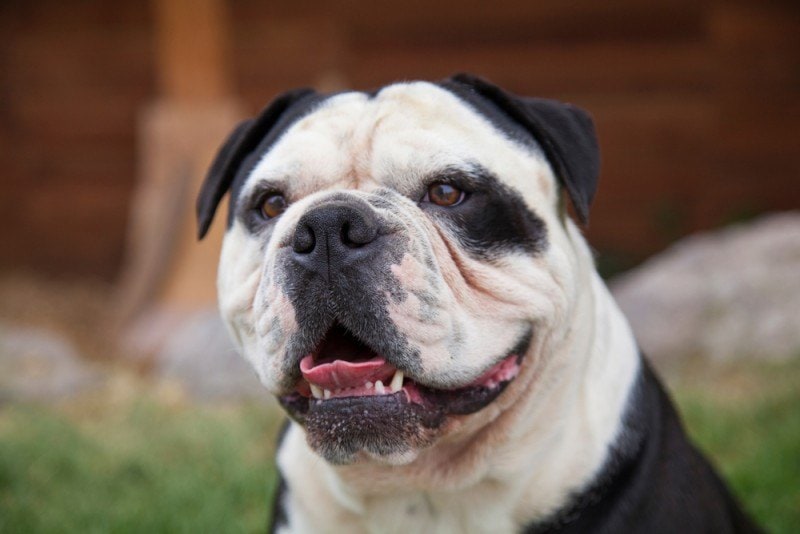Click Below to Skip Ahead
The Chow Chow originated in China. They’ve been around for centuries and are one of the oldest breeds in the world. This sturdy, robust pup was originally bred as a working dog. They are an intelligent and independent creature with a loving personality that would do best in a family household or a farm where they can have plenty of room to roam.
Breed Overview
Height:
17–20 inches
Weight:
45–70 pounds
Lifespan:
8–12 years
Colors:
Black, blue, cinnamon, cream, red
Suitable for:
Adventurous couples, outdoor families that need help with work/hunting
Temperament:
Great watchdog, doesn’t bark much, affectionate
Chow Chows have distinctive markings on their faces that sometimes make them look like they are wearing masks or hoods. This breed is intelligent, independent, and loyal to their family members when they bond with them.
If you’re thinking of adopting a Chow Chow or want more information on how to take care of them, we’ve got you covered! This article covers everything that you need to know regarding the history of these dogs and the special care that they need to remain happy and healthy.
Chow Chow Characteristics

Chow Chow Puppies
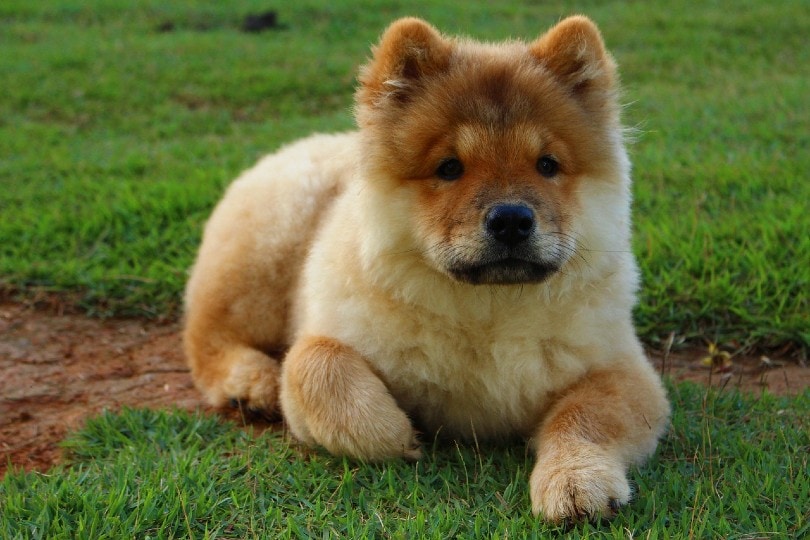
Chow Chow puppies are cute and cuddly, with thick fur and a distinctive blue-black tongue. They are typically born with a fluffy, round appearance and can grow to be medium-sized dogs. They are known for their independent and aloof personalities, but they are also very loyal to their owners and can make great pets for the right person. However, it is important to note that they are not typically as sociable as some other breeds, and early socialization is key to ensuring that they grow up to be well-adjusted, friendly dogs.
Raising a Chow Chow puppy requires commitment, patience, and proper training. They are intelligent dogs, but they can also be stubborn, so consistent training is important. It is also important to establish a routine for grooming, as their thick coat requires regular attention to prevent matting and tangling. Additionally, Chow Chows are prone to certain health issues, so it is important to provide proper veterinary care and to feed them a balanced diet. With the right care and attention, a Chow Chow puppy can grow into a happy, healthy, and well-behaved dog.

Temperament & Intelligence of the Chow Chow
Their thick, luxurious coat tends to fool people into thinking that Chow Chows are lazy and content on staying all day indoors. However, this breed is very energetic and loves being outside.
These dogs can be stubborn at times, but when they like you, they will show it. They’re fiercely loyal to their family members and do not tolerate strangers invading their territory.
Because of their independent nature, these dogs are best suited for families with older children or people who want a dog used to being around others while also knowing how to entertain themselves.
Are Chow Chows Good for Families? 👪
Yes, these dogs are fun to be around and also typically do well with children. The only thing you should keep in mind is that kids sometimes underestimate their strength, and if they play too rough, the dog may defend itself.
This breed needs a good balance of mental and physical activity every single day. If you have kids, it’s a great idea for them to take the dog on long walks or hikes after school as this will both wear out your pet and give your child some exercise, too.
Does This Breed Get Along With Other Pets? 🐶 😽
Chow Chows are not very fond of other pets, especially those they didn’t grow up with. That’s why if you’re planning on buying a kitten or puppy as a companion for your dog, make sure the two have had plenty of time to get used to each other before getting them home.
If this breed starts acting aggressively towards another pet in your house, it’s best to separate them as dogs act out when they feel insecure. You should start treating the Chow Chow like they were a new addition to the family and be around them more often to establish trust with other members.
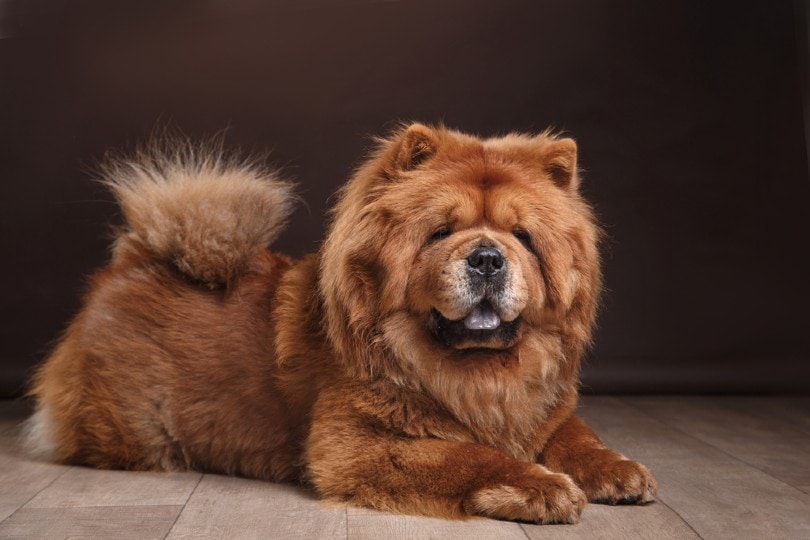

Things to Know When Owning a Chow Chow
Food & Diet Requirements 🦴
This breed is not the type to overindulge at dinner time, but they do have a distinct appetite. Due to their heavy fur coat, Chow Chows tend to eat more than most other dogs per day, and you should be prepared for this extra cost.
They are also picky about what they eat, so it might take trial and error before figuring out which food your pup likes best. Look for high-quality dog food that is specially formulated with large or giant breeds in mind. Also, don’t ignore dental hygiene when considering your pet’s diet; foods that include tartar-control ingredients, such as parsley or mint, will help keep their teeth clean during mealtime.
Chow puppies require about 4 cups of food per day, divided into two or three meals. For adult Chow Chows, you will need to give them 4–5 cups per day, divided into two meals.
Exercise 🐕
Chow Chows are active and energetic dogs that love sticking with their family members around the house. Therefore, it is recommended that they get at least 1 hour of physical activity every day, such as walking or running, so they don’t get bored and start chewing things in the house just for something to do. Be careful when taking your Chow to a dog park. They are sometimes not fond of other canines, so make sure your pet doesn’t harass or hurt another dog.
Ensure that you also have a place to securely let your Chow Chow run off-leash, as they are escape artists and will try to find a way out of the yard if there isn’t one. They’re also attracted to water, so make sure you don’t leave them by any ponds or lakes unsupervised.
If your Chow Chow is in good shape, you can consider taking them on a run or hike with you. Just be sure to let them rest for at least 5 minutes after every 30 minutes of exercise so they don’t get injured or overheated from running too hard.
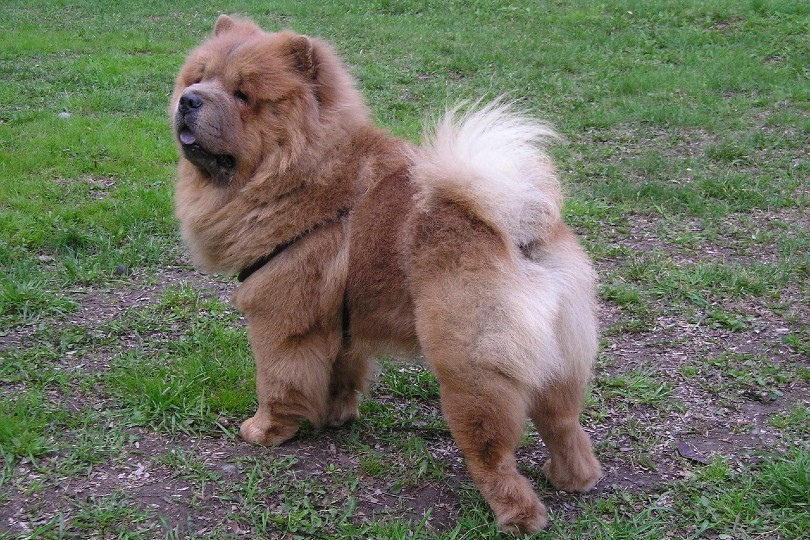
Training 🎾
Chow Chows are known to be stubborn dogs by nature, and since they also have a lot of willpower, it can take time to teach them what they should and should not do.
The best way to train this breed is through positive reinforcement (treats and praise) rather than punishing negative behavior. The dog will only end up being afraid of you and will stop trusting you completely if you punish them.
The Chow Chow is also an independent pup, so training can be more challenging than with most other breeds. They will often ignore instructions and do what they want on their own time, which means you’ll have to maintain your patience throughout the process if you want things to go smoothly. If you have the time and patience to work with this breed, you should be able to teach them a large variety of tricks.
Since the Chow is a natural hunter that has been around for hundreds of years in China, there is little doubt they can perform well in obedience training if given enough practice. It’s important to establish yourself as the leader during training. Don’t underestimate this part, as it will enable you (and others) to handle your pet safely without hassle once they get older.
Grooming ✂️
Due to their thick fur coat, Chow Chows require more grooming than most other dogs. Some people suggest getting a dog brush with rubber bristles to help deal with the shedding.
You’ll need to get your pet used to being brushed at an early age, as this is how they will gradually become accustomed to it and hardly feel any discomfort or irritation when having their coat groomed. After all, if you start brushing them only once they’re older, they may develop fear toward brushes and grooming sessions!
It’s also recommended that you take your dog for regular visits to the groomer every 6–8 weeks to keep them in tip-top shape while minimizing your workload. The extra money spent will be well worth it in the long run!
It’s wise to check your pet for fleas and ticks once a month if they go outside frequently, so you can be sure there isn’t anything making your dog uncomfortable.
Health & Conditions 🏥
The Chow Chow is generally regarded as a healthy breed. Since they’re hundreds of years old, they weren’t part of the recent dog-engineering trend. Like all dogs, however, they have their fair share of potential health problems. When you see these signs worsening or sticking around too long, it’s best to take your pet to the vet. Knowing what to look out for could end up being the thing that saves your pet from a tremendous amount of pain.
- Arthritis
- Ear infections
- Allergies
- Skin irritations
- Sensitive paws
- Eye issues
- Hip dysplasia
- Gastric torsion
Minor Conditions
Here are some of the most common conditions that your Chow Chow may end up suffering from:
- Arthritis: Your dog may start to feel stiff when getting up in the morning or after a nap. They could also struggle to climb stairs, and you might see them doing particular movements with discomfort. The joints usually swell too.
- Ear Infections: Problems like itching, redness, and inflammation are signs of infection that can be treated relatively quickly if recognized on time. If left untreated for too long, however, complications could develop, so make sure you take good care of your pet! That said, proper ear cleaning is critical if you want to prevent infections overall.
- Allergies: The signs of allergies, such as excessive scratching, hair loss, skin conditions, and inflammation, could become a problem if not treated right away. If your pet is also sneezing a lot or their eyes are tearing up for little to no reason at all, it might be an indicator of allergies.
- Skin Irritations: Rashes, sores, cuts/wounds, and ingrown hair are all signs of skin irritation, so if you notice something like these, it’s best to take your dog to the vet because they could start developing other, more serious problems. Chows are sensitive when it comes to their paws due to the thick fur that grows on their paws. Usually, this fur gets trapped in between their toes and can become infected, so make sure to keep an eye on your pet’s feet!
- Eye Issues: Cataracts, cornea problems, and persistent eye discharge are common among dogs. The good news is that you can avoid a few of these conditions if you pay attention to the health of your pet’s eyes. Check them daily to see if there are any abnormalities.
Serious Conditions
The most common health problem that Chow Chows are prone to is hip dysplasia, which can cause pain for your pet when they move around and try to walk. The first sign of this condition usually manifests during the puppy stage, but it can also begin as early as 3 or 4 years old among older pets. X-ray screening is available, so if you notice that your dog is suffering from hip issues, be sure to ask the vet for an examination right away.
If your dog gets their exercise on a regular basis and sticks to a healthy diet, they should remain active. If any concerning signs start becoming prominent, don’t wait to get help because these can lead to other more serious problems!
Another condition to look out for is bloat, which is also referred to as gastric torsion. The condition causes the stomach to twist, resulting in a considerable increase in intra-abdominal pressure. Bloating tends to occur when a pet gorges themselves on food quickly or chews on large amounts of grass.
This condition can be quite painful, so your pet will probably try to find a place to lie down and rest. There are signs that you should look out for, though, such as excessive salivation, restlessness, discomfort in breathing, vomiting yellow liquid with blood (a sign of internal bleeding), and swelling. Immediate emergency treatment is required.
If all else fails, your dog may need surgery if their condition deteriorates. Don’t let this happen to your furry friend! Make sure you take good care of them and keep track of their eating habits so you can prevent the potential onset of bloat.
Male vs. Female
There are a few differences between the males and females of this breed. For starters, males have larger heads with narrower muzzles, while females generally have smaller heads with wider muzzles. When you’re looking at their front legs, you’ll notice that male Chows usually have thicker and darker hair on their front elbows.
Males also tend to be more aggressive than female Chows, which is why they need proper training from an early age if yours needs socialization!


3 Little-Known Facts About the Chow Chow
1. The name Chow Chow is not of Chinese origin.
Although the breed is originally from China, the name “Chow Chow” is actually not what these dogs are called in the country. They are called “songshi quan.” The term “chow chow” actually comes from merchants in the 18th century, who used that word to describe sellable goods from the Eastern world.
2. They have a unique tongue.
Chows have a blue tongue! As a puppy, they have the traditional light pink tongue, but it will turn increasingly darker with age. Full-grown Chow Chows have blue-black tongues that resemble lizard skin.
3. They should be kept away from water.
They’re not Gremlins or anything, but the Chow’s fur is not water-repellant. It takes a while for them to dry, so you should avoid taking them out in the rain or when it’s been raining outside for long periods.
The sheer weight of a Chow’s fur can cause them to drown, so it’s best to avoid long swimming sessions.
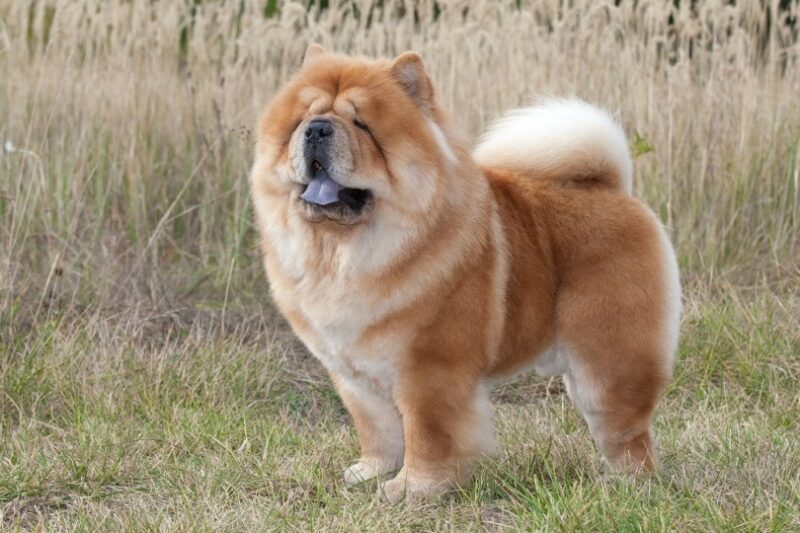

Final Thoughts
The Chow Chow is a unique breed of dog that originated in China and is known for their unusual appearance. They have black tongues and fur that is a combination of white, blue-gray, and cream.
This breed is quite rare today, considering that they used to be a favorite among Chinese royals. In any case, the Chow Chow is an energetic dog that likes to play around all day and could make a great addition to your family! That said, they should be properly trained from an early age if you don’t want them destroying your furniture or being aggressive toward other people or animals.
The Chow is a beautiful breed, and just like all other breeds, they have their own unique set of needs, so make sure to familiarize yourself with them! Do your research, and learn as much about this pup before bringing one home. Dogs are known for making excellent companions but only if you put effort into raising them properly.
If you’re interested in adopting this furry friend but would like help with any part of the process or have any questions at all, please don’t hesitate to contact us. We’re always happy to talk dogs!
You may also want to read:
Featured Image Credit: Liliya Kulianionak, Shutterstock
